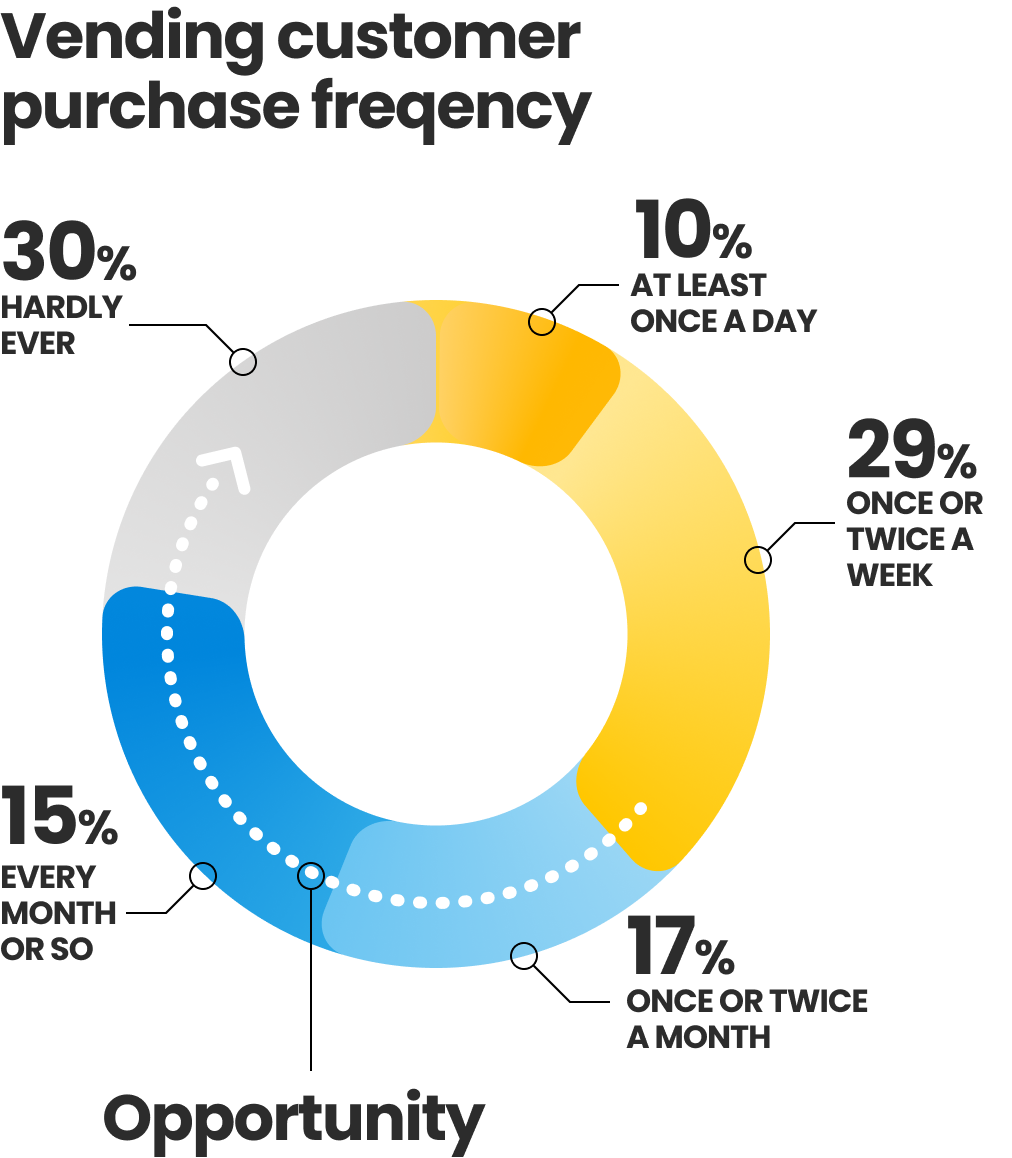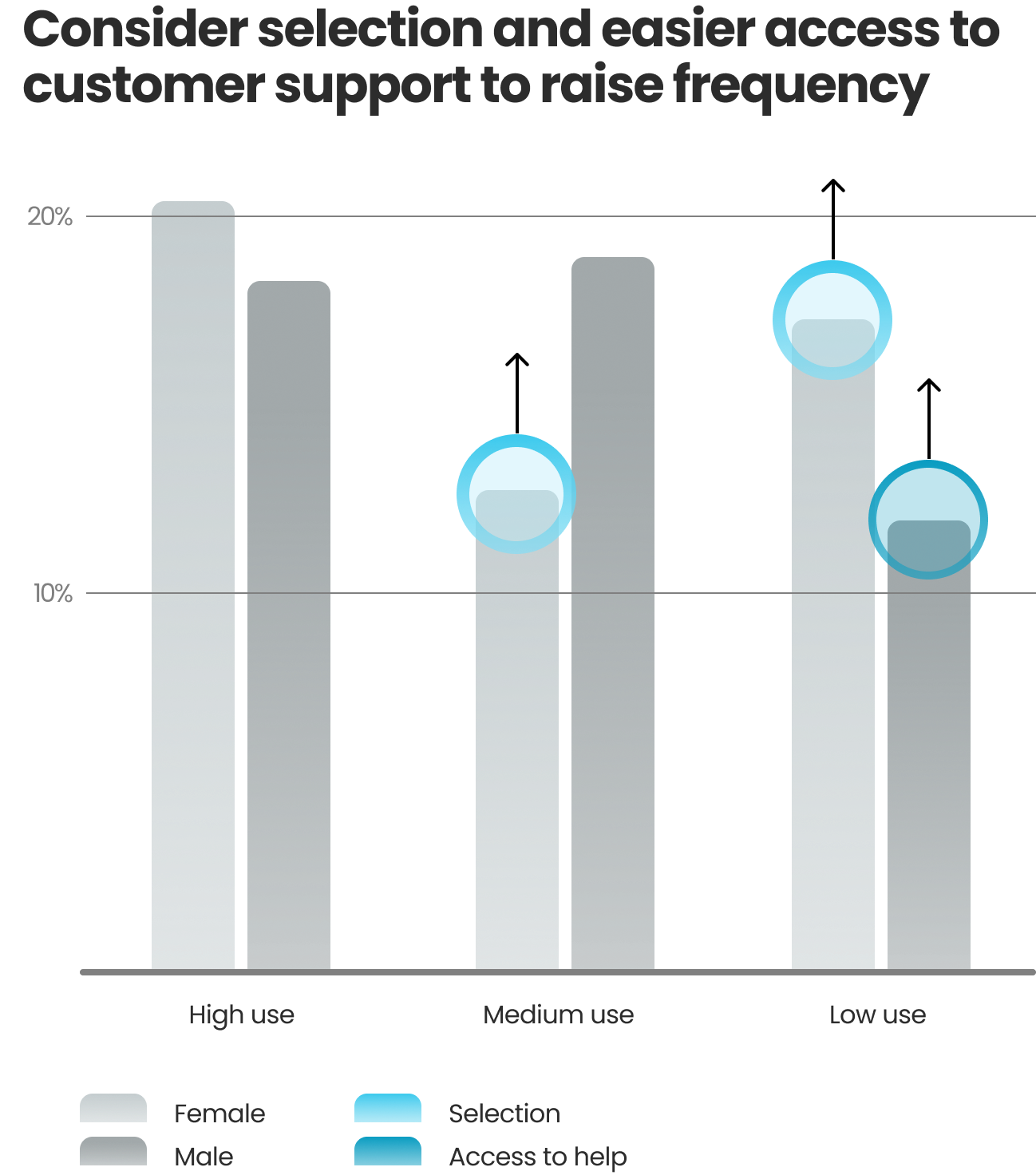Tuning into the right frequency to increase sales.
Just how often do your vending customers shop? Monthly, weekly, daily? Does knowing even matter? Opportunities to grow your business lay in understanding your customers better.

This blog series highlights findings from our recent customer survey into behaviour and attitudes of vending and self-service customers – those customers that recently used a vending machine, self-service market, office coffee service, or other unattended retail service. Our first post focused on what was most important to those customers while our second looked at how providing easier access to help positively motivated purchasing. This, our third post, considers data relating to how often customers use vending services and what opportunities that may uncover.
In our recent research we presented customers who had used a vending service or self-service retail in the last 90 days with 5 options to gauge how frequently they used vending or self-service retail – from “at least once a day” to “hardly ever”.

The breakdown is interesting – 10% of all customers purchasing daily shows that quite a few customers rely daily on vending. Add to that customers purchasing at least once a week and you have a solid 39% of customers you could consider high frequency customers.
To make the data easier to get our heads around we grouped responses into three categories (represented by three colours):
- High use: those selecting options “at least once a day”, or “once or twice a week”, shown as yellow above.
- Medium use: those who selected “once or twice a month”, shown as blue above.
- Low use: selected “every month or so” or “hardly ever”, shown as grey above.
Looking at the data in this way it’s a little easier to see where the opportunity lies: how might we encourage those 25% medium use customers to become high use? And how might we encourage those 30% customers who purchase infrequently.
The interesting thing here is that medium and low frequency customers are customers nonetheless – that is, they’ve gone past the initial resistance to using unattended or self-service retail. That’s a pretty big barrier already negotiated. The challenge now becomes how to make that use more frequent and habitual.
Moving customers to a higher purchase frequency
So how could one go about moving customers into the yellow segments?
From our previous two posts we know that 38% of existing customers would consider purchasing even more often if access to help was easier to access, and that for 28% of customers the most important consideration to purchase was selection. But segmentation is important because selection priority was heavily influenced by age – high priority for 25-44 but very low priority for those older or younger.
So what can demographics tell us about frequency?

As you might expect, there is some variation, and it throws up something of a conundrum. It would be nice if gender discrepancy was the same in both the medium and low frequency groups – the two groups we’re discussing. As it turns out, they’re quite different. But at least we know how we might target these groups. Our earlier post identified that easier access to help particularly appealed to males, so this could do the job of lifting low male use. And we know that females identified selection as their most important consideration, so that could be the answer there.

We also know that there are age variations, too, so we could use this to understand better what to expect or create a more refined hypothesis.
Using what we’ve learned, a strategy might be:
- Undertake research into product preferences for female customers aged 25-44 and explore how to integrate into your current ranging without compromising your habitual customers (male and females aged 45-64)
- Review your customer support operations and how they’re presented at point-of-sale – particularly for older and younger demographics.
Help yourself to the salt
Of course, every business is unique, and customers will vary from one to the other, and we encourage people to assimilate any research with their own experience, which is often hard-won and key to finding unique solutions to business problems. The research we share is to help provide some quantitative data to promote conversation and exploration of new ideas. To help businesses to learn a little more about customers, and consider how that knowledge might impact their business strategy.
An untapped market
Finally, a data point that may not be of immediate use, but of interest nonetheless: 74% of all respondents had not used self-service retail or vending in the last 90 days. That points to a large untapped market of potential customers.
Interested in ZippyAssist for your business?
